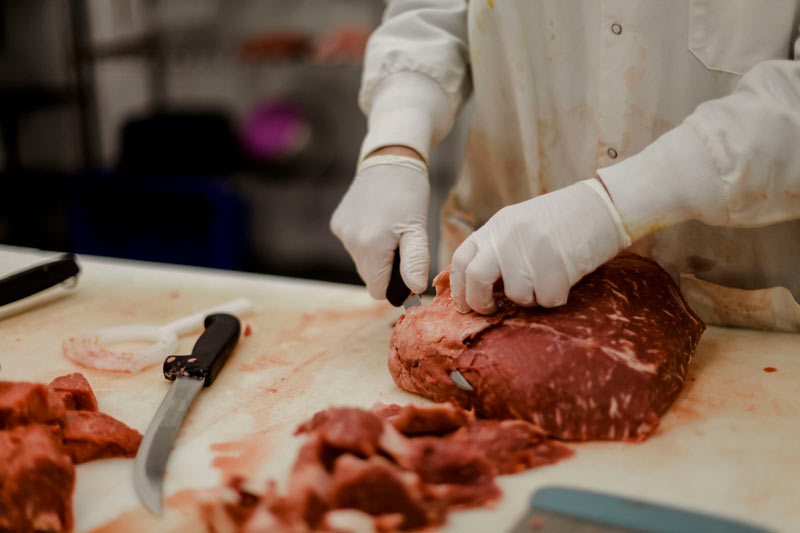How to Pick the Perfect Cut of Meat From a Trusted Meat Market
Selecting the excellent cut of meat from a trusted meat market requires a thoughtful approach that stabilizes quality, culinary objective, and budget plan. Understanding the numerous types of meat and their corresponding cuts is vital, as is engaging with your butcher to acquire insights into sourcing and preparation.
Understanding Meat Cuts


For example, the tenderloin is valued for its buttery structure and very little connective cells, making it ideal for fast food preparation approaches such as cooking or pan-searing. In comparison, harder cuts like the brisket or shank gain from slow cooking strategies to break down collagen, yielding rich and flavorful results.
In addition, the fat content of a cut plays an essential role in taste account and wetness retention throughout cooking. Cuts with higher fat content, such as ribeye, provide an even more robust flavor, while leaner choices, like sirloin, may call for mindful prep work to stay clear of dry skin (bagley meat market edwardsville il). Recognizing these nuances enables informed options that elevate cooking productions, guaranteeing that each dish showcases the ideal qualities of the picked meat
Elements to Consider
When choosing the ideal cut of meat, several essential elements enter into play that can dramatically affect the final meal. Primarily, take into consideration the sort of meat you prefer-- beef, pork, lamb, or poultry-- as each deals distinct tastes and structures. The certain cut within that classification is equally crucial; for example, ribeye delivers abundant marbling, while tenderloin supplies a lean, buttery structure.
Another variable is the cooking technique you prepare to use. Cuts appropriate for barbecuing, such as T-bones or sirloins, vary from those better matched for slow-moving cooking, like chuck roasts or shanks. In addition, freshness is paramount; always pick meat with a dynamic shade and firm texture, indicating quality and correct handling.
Premium cuts may offer extraordinary preference, yet there are likewise affordable options that, when prepared appropriately, can yield tasty results. Balancing these elements will certainly assist you pick the perfect cut for your culinary needs.
Questions to Ask Your Butcher
A butcher's experience can be indispensable when choosing the excellent cut of meat for your culinary endeavors. Start by asking concerning the resource of the meat.
Following, inquire about the various cuts offered for the type of meat you like. An experienced butcher will certainly discuss the subtleties of each cut, assisting you choose one that matches your food preparation technique and wanted end result. Don't think twice to ask about the best cooking strategies for a certain cut; butchers frequently have tips that can boost your meal.
It's also sensible to ask regarding the meat's quality. Ask about the shipment routine and exactly how usually the meat is replenished. This will certainly provide you confidence in the top quality of what you are purchasing. Ask for referrals based on your individual taste preferences. An excellent butcher will be excited to share their know-how and suggest cuts that will delight your taste buds. Engaging your butcher with these concerns can considerably boost your meat selection experience.
Identifying High Quality Meat

Appearance is another vital aspect; quality meat should feel firm and slightly bouncy to the touch. Stay clear of any cuts that really feel slimy or excessively completely dry, as these can suggest putridity or incorrect storage space. Furthermore, scent plays an important duty; fresh meat needs to have a tidy, neutral scent, while any kind of repulsive or sour odors are warnings.
Finally, think about the resource. Investing in from a respectable meat market, where the meat's origin is recognized, can ensure better requirements. By concentrating on these signs-- shade, marbling, structure, scent, and source-- you look at here now can confidently select cuts that will raise your cooking and eating experience.
Food Preparation Approaches for each and every Cut
Choosing the best food preparation method is vital for making best use of the flavor and tenderness of each cut of meat. Different cuts possess special qualities that dictate the go to this web-site most suitable food preparation methods.
For tender cuts, such as filet mignon or ribeye, dry heat techniques like cooking, broiling, or pan-searing are perfect. These techniques enhance the all-natural flavors while making sure a juicy, delicious texture. Conversely, harder cuts, such as chuck or brisket, benefit from moist heat techniques, consisting of braising or slow food preparation. These methods assist damage down connective cells, causing a tender, delicious dish.
Pork chops and poultry busts are flexible and can be cooked making use of both completely dry and damp approaches. While grilling or roasting can generate scrumptious results, poaching or sautéing can preserve wetness and inflammation. For lamb, approaches like toasting or braising are suggested, as they match the meat's durable taste.

Conclusion
To conclude, choosing the ideal cut of meat from a trusted meat market requires a detailed understanding of meat cuts check my blog and factor to consider of different aspects, consisting of resource, high quality, and cooking approaches. Involving with the butcher via targeted inquiries can yield beneficial understandings and referrals tailored to specific cooking demands. Focusing on both top quality and spending plan will boost the general gastronomic experience, making certain that the picked cut fulfills assumptions in both taste and prep work.